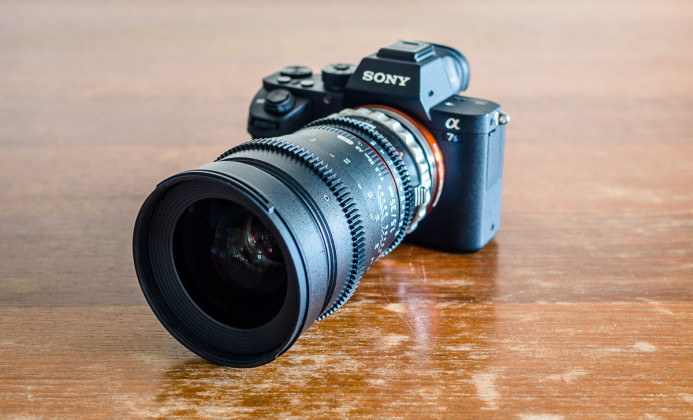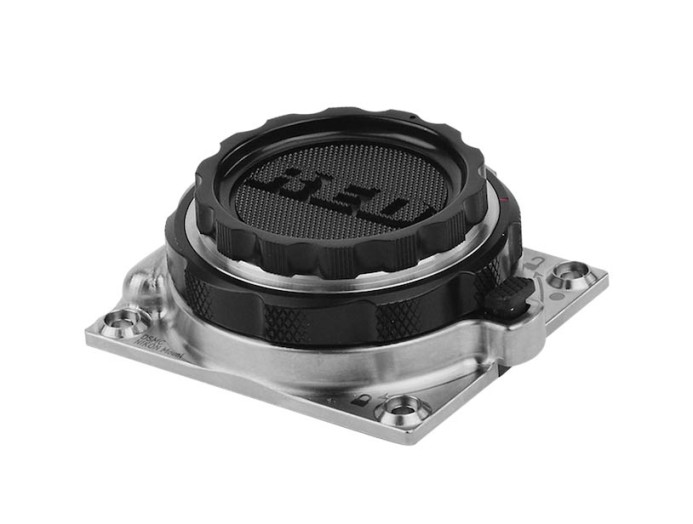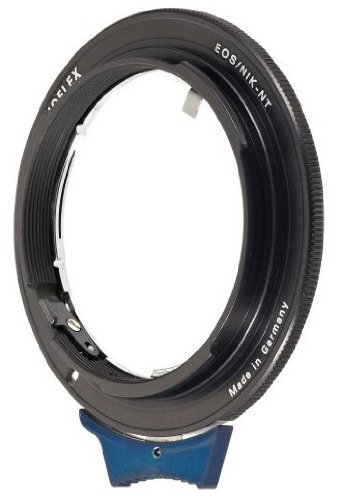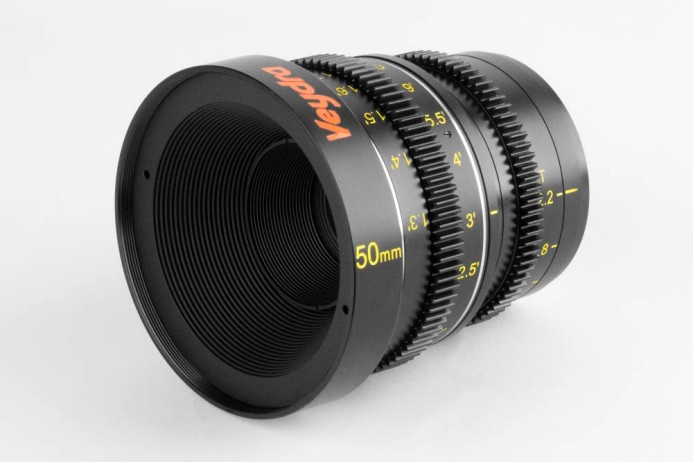Hey Sol! Cinema Lenses for the Panasonic GH4: Should I Go Native or Not?
Ready to build a set of cinema lenses for the Panasonic GH4, but unsure which lens mount is best?
Makoto asks:
I am about to purchase a set of cine lenses and don’t know if I should go with MFT or EF/Nikon mount lenses and a Speed Booster.
I really would like to get the “full frame” look with nice bokeh.
Thanks a bunch!
Indeed, sometimes the GH4’s easy adaptability with almost any lens mount under the sun can actually make things more difficult.
Native Micro Four Thirds (MFT) lenses are solid options when you’re looking at modern lenses to use for video work as well as still photography thanks to their compact size, light weight, and fast autofocus. However, when it comes to cinema/cinevised lenses, where everything is fully manual and even native options are fairly heavy-duty, the case for non-native lenses takes the lead for several reasons.
The Lenses are the Same
First, many cine lenses that are available in both native MFT and non-native (e.g. Nikon, Canon EF, etc.) mounts are effectively the exact same lens. The optical design is identical, and the only difference is that the housing of the MFT version has a longer barrel to position the optics at the proper distance from the GH4’s sensor.
It’s almost like a non-native lens with an MFT adapter built-in.
Eschewing the adapter does have some benefits, though. For one, as the native version is a single unit, you don’t have to worry about a faulty adapter introducing issues such as infinity focus, light leaks, or play between the lens and the adapter.
If you’re only ever going to shoot with MFT cameras such as the GH4, then going with a set of native lenses would simplify your setup and spare you from having to deal with adapters altogether.
However, as the internals are basically the same between the native and non-native versions of a particular lens, you won’t see much (if any) savings in the size and weight of the MFT mount version. Also, as you’ll see in a minute, going with the native MFT version can also limit your options when shooting with the lens.
Bottom line: Cine lenses that come in both native and non-native flavors are basically the same on the inside. Native versions are basically full-size cine lenses with an MFT mount, so you get none of the size and weight benefits of modern MFT lenses.
Non-Native Lenses are More Versatile
Simply put, a native MFT lens can only be used with a native MFT camera, such as the GH4. If you pick up another camera down the road that has a different lens mount (e.g. Nikon’s F mount, Canon’s EF mount, etc.), then you’ll also have to pick up a separate set of lenses to use with that camera.
By comparison, if you had a set of cine lenses with a non-native mount such as Nikon’s F-mount, you would only need to pick up a simple adapter to use it with your new camera. For example, I spent less than $20 on a solid Nikon/E-mount adapter (review coming soon) and now I can use the same Nikon-mount lenses I’ve been using with the GH4 on the Sony a7S II as well, including Rokinon’s 35mm T1.5 Cine prime.
When it comes to choosing a non-native mount for manual lenses, I highly recommend Nikon’s F-mount. The F-mount has been around since the late 1950’s and continues to be used today on Nikon’s own cameras. The only change is that modern Nikon lenses do not have a manual aperture ring, so their aperture is controlled via a mechanical lever on the rear of the lens (which vintage Nikon lenses also have).
Furthermore, the large flange distance of F-mount lenses allow them to be used with virtually every modern camera available today, from the Panasonic GH4 to the RED Weapon. Nikon F-mount lenses can even be mounted on a Canon EF cameras with a thin adapter.
That’s what I call versatile.
Bottom line: Non-native cine lenses can be used on the GH4 and other cameras as well. Choosing cine lenses with a Nikon mount is recommended because it is one of the most adaptable lens mounts out there.
Enter the Speed Booster
A cine lens with a native MFT mount may save you from having to use adapters, but that’s not always a good thing. Without being able to use adapters, you also lose access to tools like Metabones’ Speed Booster that can help you get more out of your lenses.
The Speed Booster is a focal reducer— it contains custom-designed optics that reduce a lens’ focal length and change how your lenses appear on the GH4 in two key ways:
- Provides a wider field of view — a smaller focal length allows more of the scene to fit in the frame.
- Increases brightness by 1 stop (or more) — more light concentrated on the sensor results in a brighter image.
Most cine lenses that come in both native and non-native versions actually project an image circle large enough to cover a full-frame (or at least APS-C) sensor, but the GH4’s smaller sensor only sees a portion of the lens’ full image.
The optics in the Speed Booster allow more of a lens’ image to fit on the GH4’s sensor. Additionally, more light is being focused into a smaller area, resulting in an image that is at least twice as bright. Here’s an example of the difference between using a lens without and with a Speed Booster:
Bottom line: Non-native cine lenses allow you to use specialized adapters like the Speed Booster to squeeze as much as possible out of your lenses.
Counterpoint: The Lens Matters
While a lens’ mount is a factor when considering its viability, it’s also important to remember that the lens itself may have benefits that trump many of the reasons to choose one mount over another.
Simply put, different lenses have different characteristics and qualities that give them a unique look. As a result, if you are looking for a lens that has minimal breathing, certain flare characteristics, or a particular aesthetic that lends itself to your project, then choosing a lens mount is less important.
The lens makes the image. If the same lens is available in multiple mounts, then by all means, get the version with the most versatile mount (e.g. Nikon). However, if the lens you want to use comes in just one mount, then your decision is made for you.
For example, Veydra makes cinema lenses specifically for MFT cameras like the GH4. Their Mini Primes are true cinema lenses, rather than rehoused still photo lenses like Rokinon’s cinevised lenses.
As such, they feature minimal focus breathing, long focus throws with detailed distance markings, and solid metal construction. Furthermore, since they are purpose-built for MFT sensors, they are also more compact than full-size cinema lenses that are designed for Super 35 or full-frame sensors.
If Veydra’s lenses deliver the features and aesthetics you’re looking for, then you’re getting a native MFT lens. The same goes for any lens that is only offered in any other single mount.
Nikon Mount When Possible, but Native is Fine Too
Building a set of cine lenses with a Nikon mount gives you the most options in terms of versatility and future-proofing. In the end though, if compact size, lighter weight, and more affordable cost is a priority, there’s no problem with going native with Veydra’s MFT cine lenses.
You may have to buy new lenses for a different camera some day down the road, but at least you’ll be able to reap the benefits of a native MFT lens as long as you’re shooting on the GH4.
Submit A Question
Have a question that you would like to have answered once and for all? Send me your question to have it featured in a future Q&A post!
Related
- Panasonic GH4
- Sony a7S II
- Veydra Mini Prime Cinema Lenses
- Rokinon Xeen Cinema Lenses
- Rokinon Cine DS “Cinevised” Lenses
- Metabones Nikon to MFT Speed Booster Ultra
More Resources
- Why You Should Be Excited About the Panasonic GH4
- Lens Options for the Panasonic GH4
- Memory Cards for the Panasonic GH4
- Rigging the Panasonic GH4
- Stabilizing the Panasonic GH4
- Getting the Best Audio from the Panasonic GH4
- Should you buy the YAGH for the Panasonic GH4?
- 6 Reasons Why DSLR Shooters Love the Panasonic GH4










